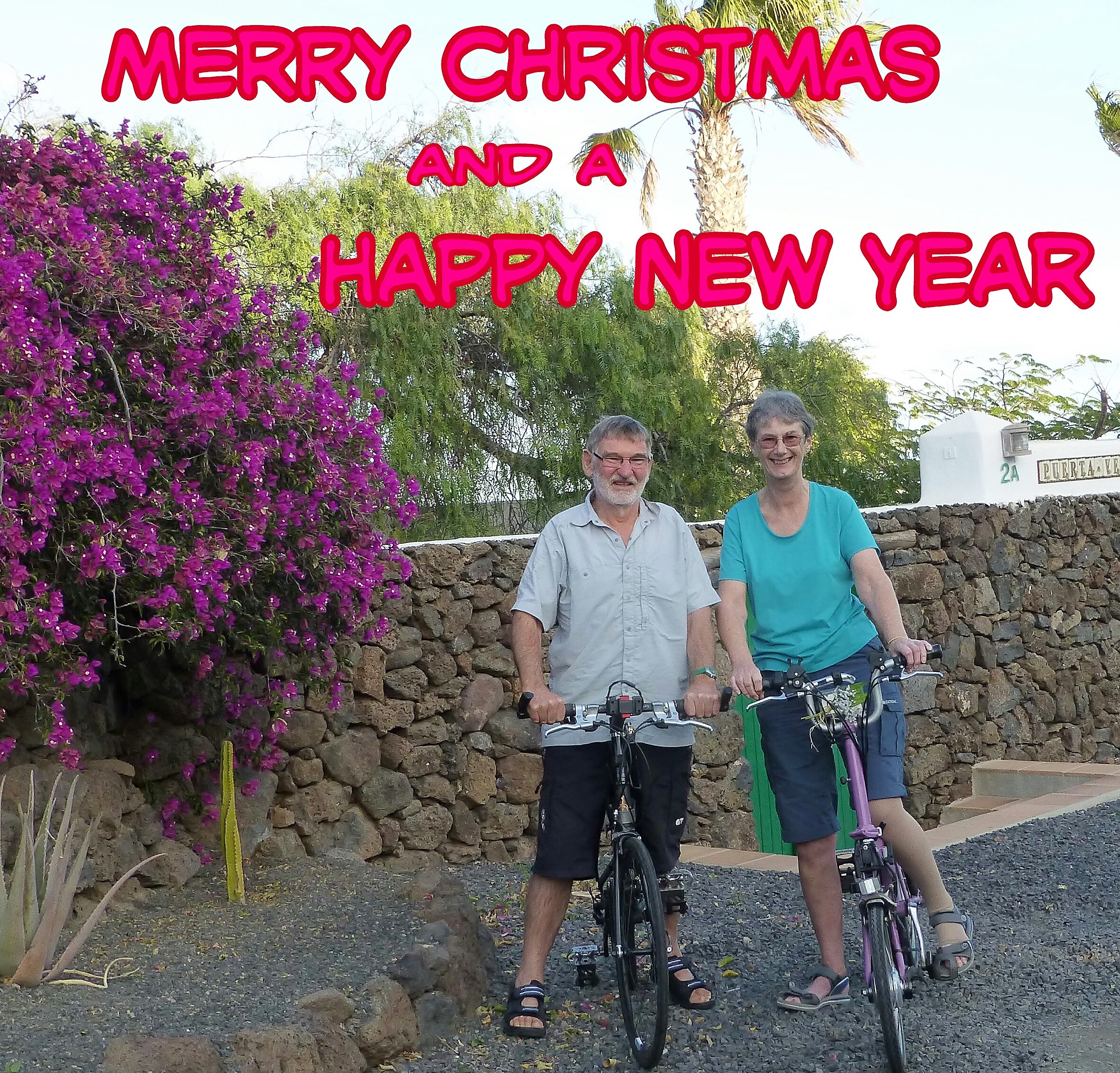 |
On the Why How and Downloads You can download the parts of the route we cycled. It needs to be unzipped and saved to a directory of your choice. You can then load it into the appropriate applications and GPS.
The Blog
Lisbon onwards
We left the sleeper train at Lisbon and assembled the bikes on the platform. Out of the station was easy, just like it used to be everywhere. The platforms are at street level and being a terminal there is no bridge or lift needed. This is just too difficult for modern architects to understand.
Straight opposite the exit was also a traditional station breakfast café. It was welcoming and we were ready for coffee and cakes. We celebrated that we had been to three countries on our bikes in 14 hours.
We cycled a couple of kms along the main road and passed the local barracks. Hundreds of squaddies were on parade. As it hardly seems likely that Portugal will start world war 3 we struggled to understand why they were there but it was not nice.
We caught the fast catamaran ferry to Seixal. The ferry is part of the public transport network and is cheap and fast. It was uncrowded and we had great views of the Lisbon Roads and delicately constructed suspension bridge.
We then had to cross the busy area between Seixal and Setubal. On our previous tour in Portugal locals described the country as being second world. At least in this area this still applied. The vehicles on the road were, often as not, decrepit. The trucks were usually old, asthmatic, overladen and belching out fumes. The road surface matched the trucks.
Once out of the port area things were less hectic and there was more room to wriggle around the deformed road surfaces. It also became hilly and a lot more attractive. And a good thing about second world is that café prices are about half those in the UK, France and Spain.
At Setubal, a large commercial town, we went straight to the ferry port. We wanted to cross to Troia on the catamaran but had to get the car ferry as, for some inexplicable reason, the cat does not take bikes. Still it was nice sitting in the sun waiting for the ferry.
The management was not entirely happy about the car ferry as it took us 5km beyond our booked hotel. Funny thing was that the Garmin was a lot clever than he was. It knew we had to take the ferry, where it docked, and where we were staying, and just took us the right way.
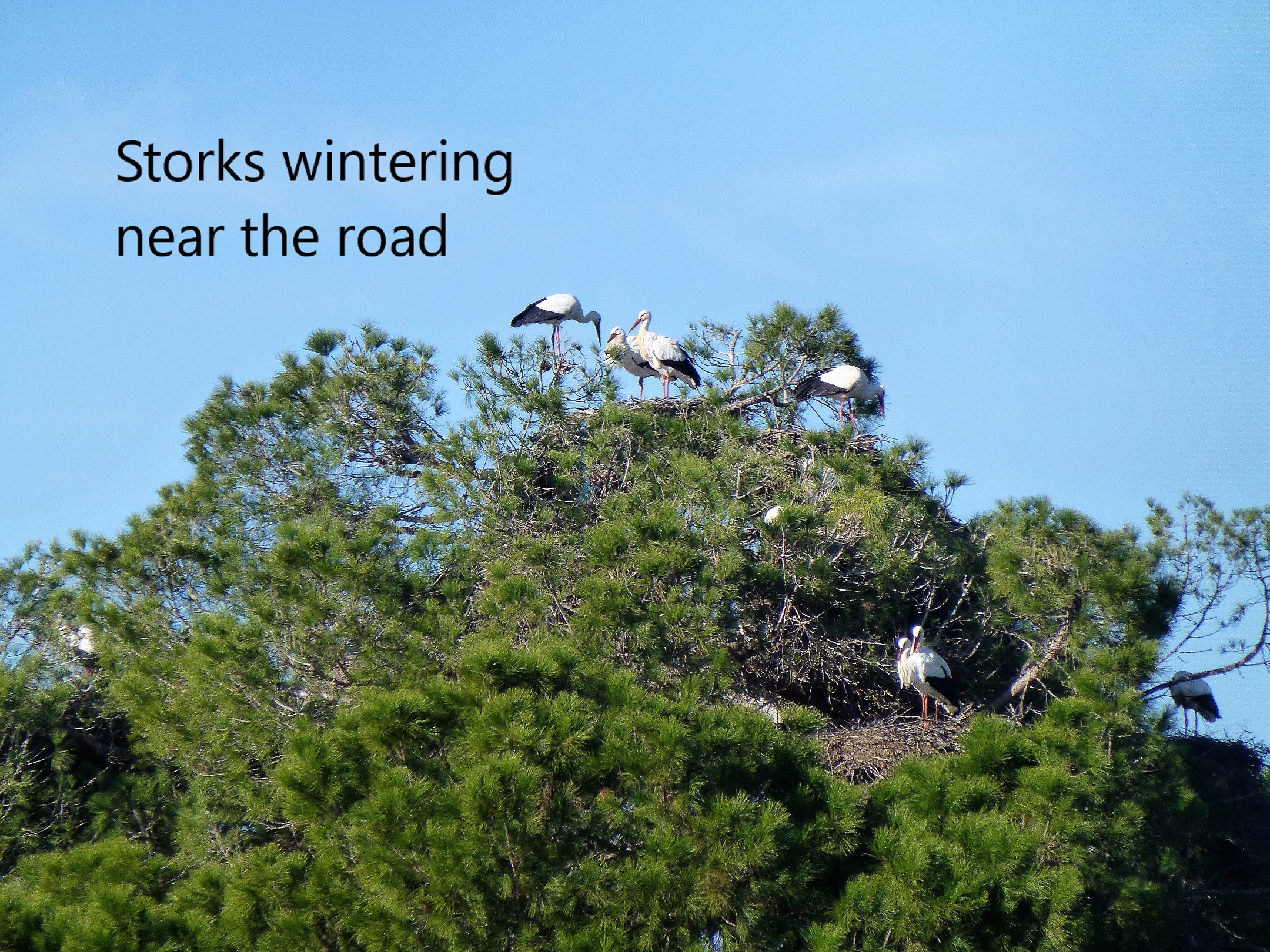 |
On Tuesday we were on our way south from Troia to Grandola. Troia is a trumped-up golf resort built at the end of a sandy 15km long peninsular. Our Kevin McCloud style apartment was great, it would have been ideal for a longer stay.
Being winter not only was Troia deserted except for us and a skeleton crew of hotel and maintenance staff but the only access road, 15km long, was also empty of traffic.
When we left Troia the management did a double take when he looked at the GPS. The next direction was to take the second exit at a roundabout in 45km.
The GPS was of course right and, what started as a pleasant ride in the sunshine became a bit monotonous. The ride was mainly through pine forests among the sand dunes. There were occasional views of the sea and the commercial shipping port of Setubal. The first 15km felt very lonely.
As we reached the interior at the end of the peninsular we followed the narrow river in its wide valley. This is a rice growing area, something we haven't seen before in Europe. The paddy fields were extensive and we cycled beside them for at least an hour.
Habitation was still very sparse though we did manage to find a couple of cafés along the way. One does you know. The workers seem to fill the cafés at lunch time and have a set meal. It all seems rather like it used to be in France many years ago and we liked it.
We would also like to note that when we left the hotel this morning at about 10am the temperature was 12 degrees and for most of the ride was between 18 and 20 degrees under a blue sky.
At Grandola we stayed in a “boutique hotel” which probably means you can have anything you like as long as it is not a simple uncluttered hotel room with a comfortable bed and good shower.
We went out to eat and like many people here the lady chef cooked us a nice meal taking into account out peculiar dietary requirements.
 |
Grandola to Aljustrel
We left Grandola on the IC1, a major road with fly unders and overs etc. We had no alternative but to use it for the first half of our ride. It was not that bad, all single carriageway with a wide hard shoulder and a good surface. Just like most of the cycling we did in Canada.
We took coffee at a garage and round the back in the empty and weed covered car park the management sat in the sun and did some bike maintenance.
A little further up the road we came across an area adopted by a flock of storks. We heard them clacking before we saw them and their nests.
Soon after this we turned off the route onto a farm road. It was no further and the heavy silence was an amazing contrast to the IC1. And so was the bad surface. It may once have been tarmac and had, many years ago, been patched. Now it was “technical” on our Airnimals with road tyres.
The last part of the ride into Aljustrel was on an N road with little traffic. By now the management, who was not having the best of days, was very tired. He drafted into Aljustrel behind the stoker.
Aljustrel seems to be a county town. The hotel was large and modern and much better than a boutique hotel. We ate in the local pizza place and shopped for tomorrow.
Aljustrel to Pao e Agua
Yet again we awoke to blue skies though we did not leave until gone ten. It may look warm outside but it is only two degrees at night and it takes a while to warm up.
Going out of town we stopped to look at a steam shunting loco on display and then followed the overgrown railway. The road went up and down a good deal more than the rail track. There was very little traffic and the surface was poor even though this was an N road.
Following the planned route we turned off onto a farm road route, but even so the surface was ok.
Around coffee time we came near to a large village just off the route. Like many of the streets in the towns and villages they were cobbled here. The surface was of very coarse stones and it was difficult to ride. It was worth it to enjoy our coffee in the sun and see a village with a school, church, bars, one or two shops and some market stalls.
Rejoining the route the management was concerned because his route went off on a dirt track. There was a sign which the stoker managed to translate. We could get to the next village on a farm road but it was subject to flooding.
On the good side the surface was quite good tarmac and the flooding area was dry. We were lucky because there were stepping stones across the flooding area about 75m long and at a depth of around 75cm. It would not have been easy to carry our bikes and gear across.
 |
Once we reached the village we stopped for our picnic lunch. It was a smallish place and, like all the villages we have seen, most of the houses are freshly painted and well maintained. Our next turning took us onto a single track tourist road which served several villages before taking us to our place for the night.
This was billed as a Refuge and Turismo Rural. We anticipated something like a youth hostel. It was actually a large modern building with 7 en-suite bedrooms, a kitchen and large living area. We think it was built by the owner as his private hunting lodge, possibly with a tourism grant and so he now has to offer it to the likes of us.
We were the only guests and it was very pleasant except for the gory memorabilia of hunting everywhere. We cooked in the evening and were served a lavish breakfast and invited to take what we needed for lunch.
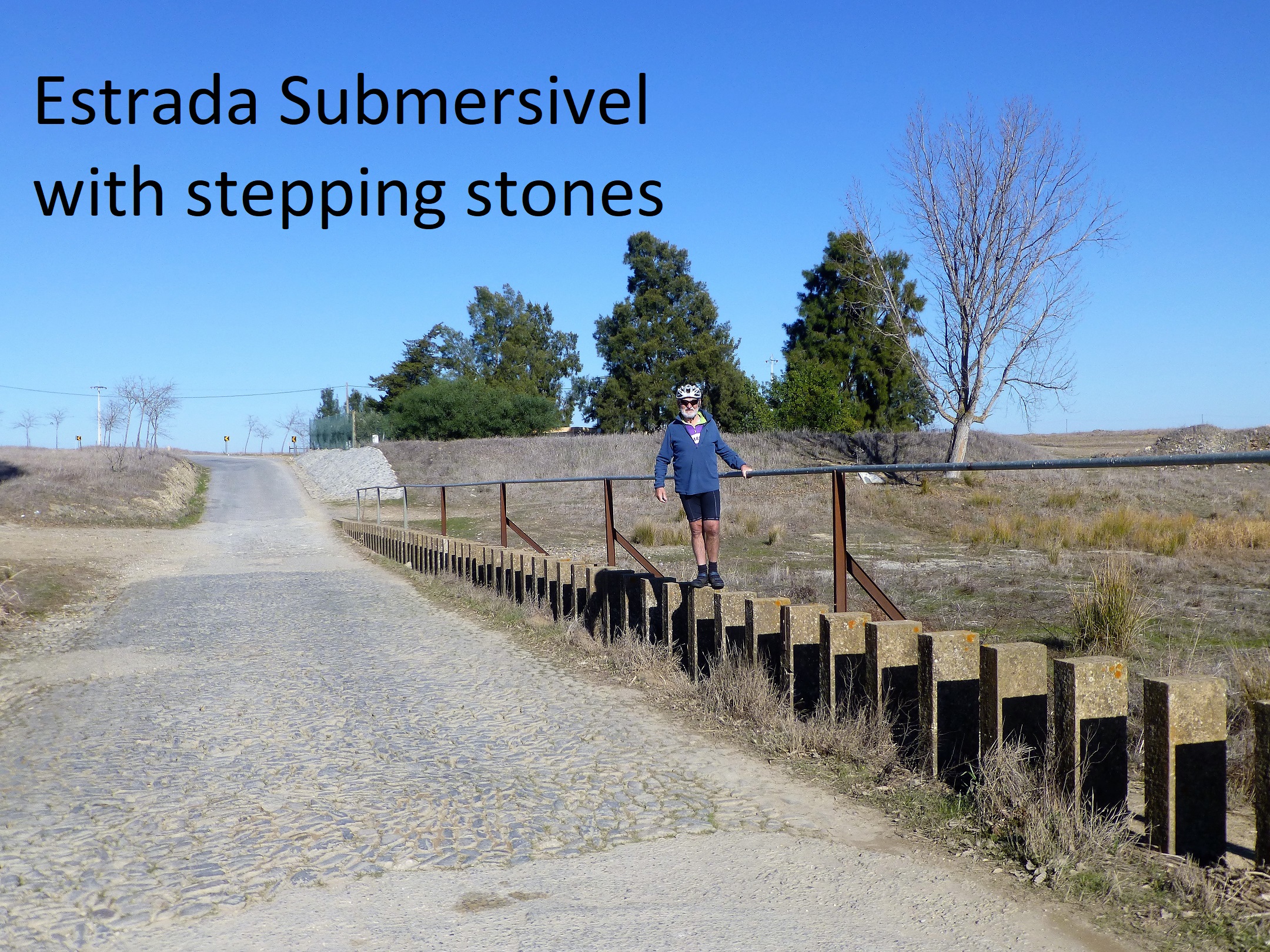 |
Pao e Agua to Alcoutim
We left soon after 10am, once the sun had raised the temperature to a cycleable level. We joined the single track road where we had left it yesterday. We then had the unpleasant experience of watching hunters try to kill small birds. Apparently it is the small bird season.
We suppose it all makes work for the working man and the management saw similar goings on in Dorset just before we left. We expect they leave the badgers alone here though.
We came to the end of the single track road and joined an N road. Traffic levels were very light and the whole route was mainly through the forest and very hilly. The climb was a good deal more than the management's usual Friday ride.
We found a coffee stop along the way. Even though it was by now around 20 degrees the proprietor was still wearing a heavy sweater as he nodded off in the sun after he had served us.
Picnic lunch was at some tables in a deep valley which was our entrance into the Algarve. The fine food provided by the hunting lodge gave us the energy to climb out of the valley before descending into Alcoutim.
It was another great ride and mainly along the Portuguese Spanish border. The hills on the Spanish side were full of wind turbines, no doubt they are showing off to the less well off Portuguese.
Our hotel was right on the edge of the river which forms the border. From our fine room we could see an ancient Spanish castle and a modern lookout point on the opposite side. There are yachts moored in the centre of the river which must move countries each time the tide turns. We wondered who collects the mooring fees.
We were the only guests in the very nice three star hotel and were immediately upgraded to the best room. The stoker agreed with one of the three staff the menu for our vegi dinner which she would cook especially for us. And very nice it was.
The downside was that it was very cold. We had almost forgotten how cold houses can be in warm countries in winter. They often don't have central heating, as this hotel doesn't, but rely on air conditioning units. These never work perfectly in winter and it takes ages for the properties to warm up. So far from ideal.
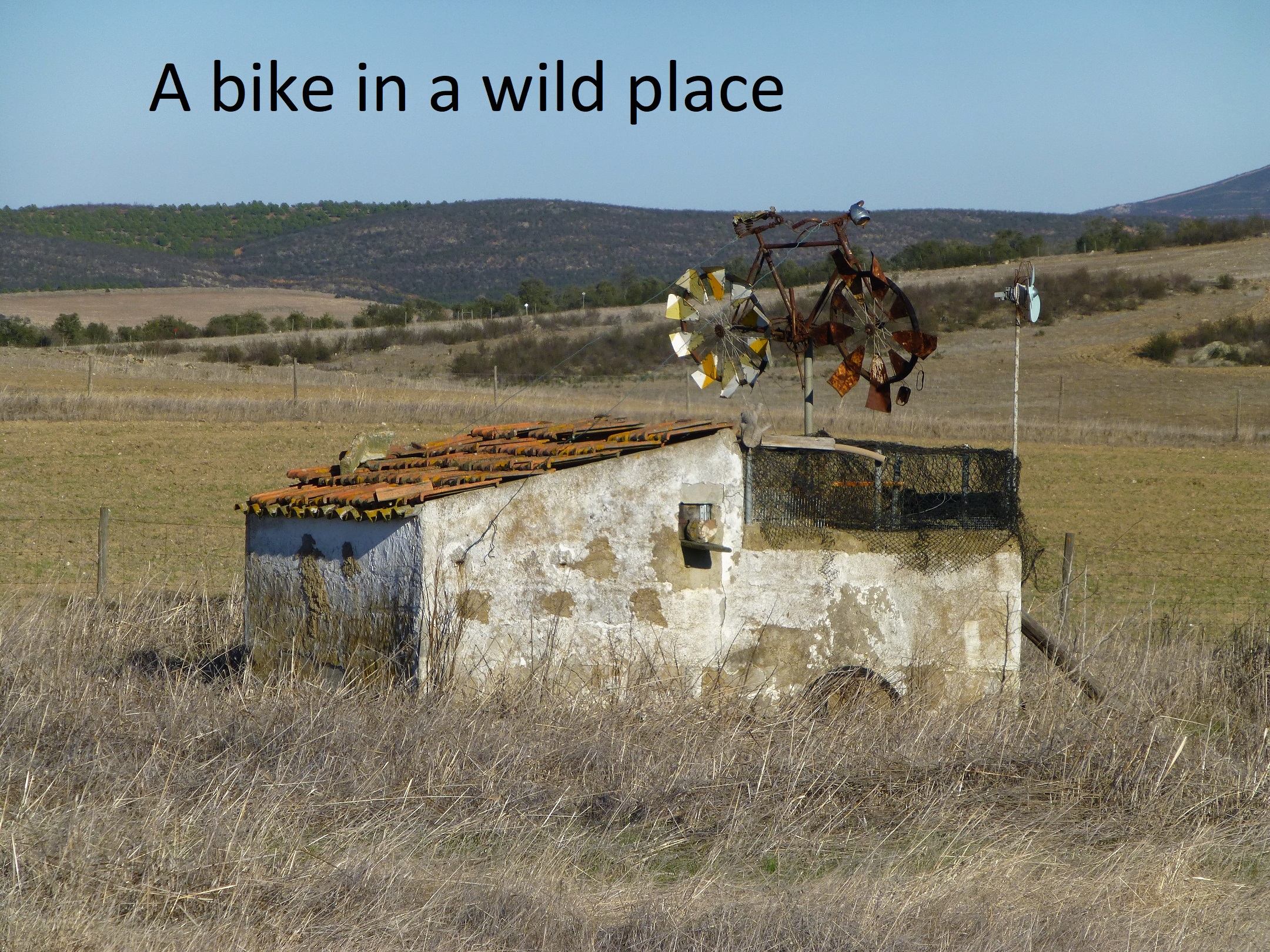 |
Alcoutim to Vila Real de Santo Antonio
Alcoutim is a very pretty small place nestling in a valley beside the river. If we were not so lazy and cold we could have spent yesterday evening exploring. We will have to do that another time.
We awoke to a rather cold mist over the river. We could only just see the Spanish side but were reliably informed over our lavish breakfast that the mist would clear around 11am.
We left to negotiate the very hilly cobbled streets. By the time we joined the riverside road the sun was breaking through and the temperature on the rise.
Our ride today was far from flat. The stoker was miles in front on her electric Leo while the management ground up the hill handicapped by his heavy luggage. It was another lovely ride, the first half beside the river. We were often high above it and then back at river level. There were even little villages along the way for coffee.
For some reason, of which we are not aware, even though Santo Antonio is on the river and we were on the river, we had to climb and climb on the only road, which went inland.
It was actually the old National highway and bypassed by a modern IC road. It is now a great cycling road. It still has a good surface and the ups and downs have of course not changed. It was great fun cycling through the forest in the sunshine. And no traffic.
The last three or four kms were on the only road in and a bit busy. We soon found our lovely second floor apartment for Christmas.
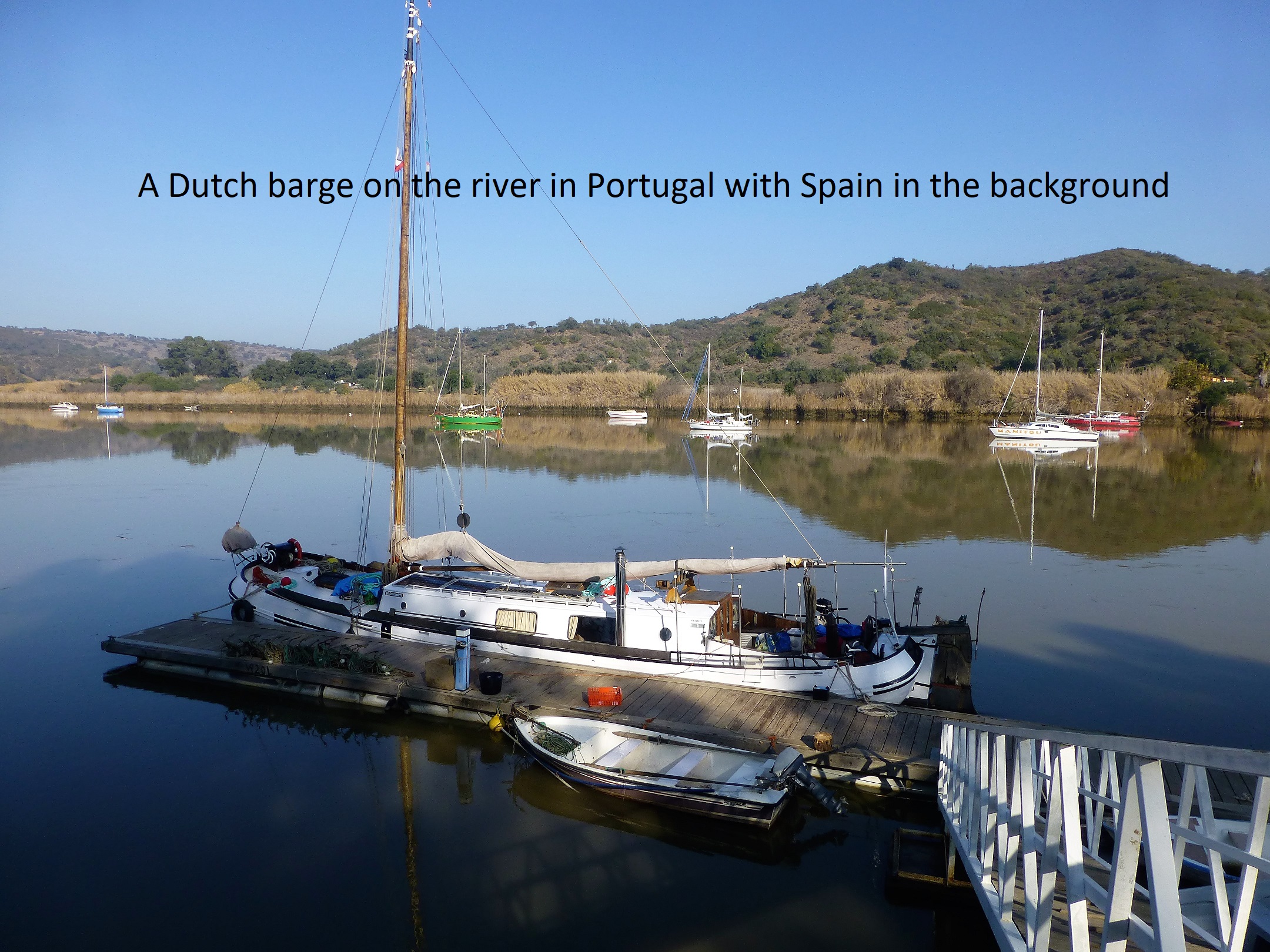 |
Vila Real de Santo Antonio for Christmas
We were just so lucky with our apartment. It was large, comfortable, new and everything worked. It would be hard to find a better place for Christmas.
It took two trips to the excellent Lidl to stock up. We cooked our usual Christmas meal of mushroom brioche with all the trimmings. Just like carnivores our leftovers lasted the rest of our stay.
Once we had rested after our travels we spent time exploring the border town on foot, and the wider area by bike. The town's main focus for tourism is its very long promenade and there are lovely sandy beaches just a km away.
The town itself has a centre which is nice enough, nothing special but with everything we needed. We especially liked the butterfly artwork and of course Lidl.
The whole area is inundated by campervans. They are everywhere. In proper sites, in car parks, on streets, in the sand dunes and in some wild places. We saw every configuration from full off road to a Mercedes truck bigger than a bus with a room which pushed out sideways.
It is hard for us to see the attraction of campervan living. The sites were just about acceptable but still looked fairly squalid and away from sites it looked plain dreadful. And it was all made worse by the drain smells in a few parts of this low lying town.
Vila Real de Santo Antonio to Huelva
On 29th December we left our apartment and made for the international ferry to Spain. It is a strange craft, about 25m long and 10m wide and made of wood. It is capable of taking about six cars which roll on one side and off the other just as we did.
We boarded the 10h30 ferry together with about thirty people but no cars. It cast off and went upstream about a km before landing in Spain, arriving at 11h45 local time. We disembarked but still had about a km to ride on cobbles. We had hoped we had left the cobbles behind in Portugal.
The ride was fairly uneventful for us. The management just managed to avoid being run over by an out of control pony and trap. The stoker had to contend with a road with more potholes than tarmac.
What made the potholes worse was that the map was wrong and we had to divert back to the main road only 5km on from where we had left it. Too much main road today but not many hills.
The approach to Huelva is interesting, being on the old main road and a long bridge over the inner harbour. It was all on a cycleway once we discovered the way onto it. A few hundred metres away is the even longer motorway bridge with its designer lighting and traffic pollution.
We booked into our usual hotel in Huelva town centre and prepared for our sea crossing to Lanzarote tomorrow.
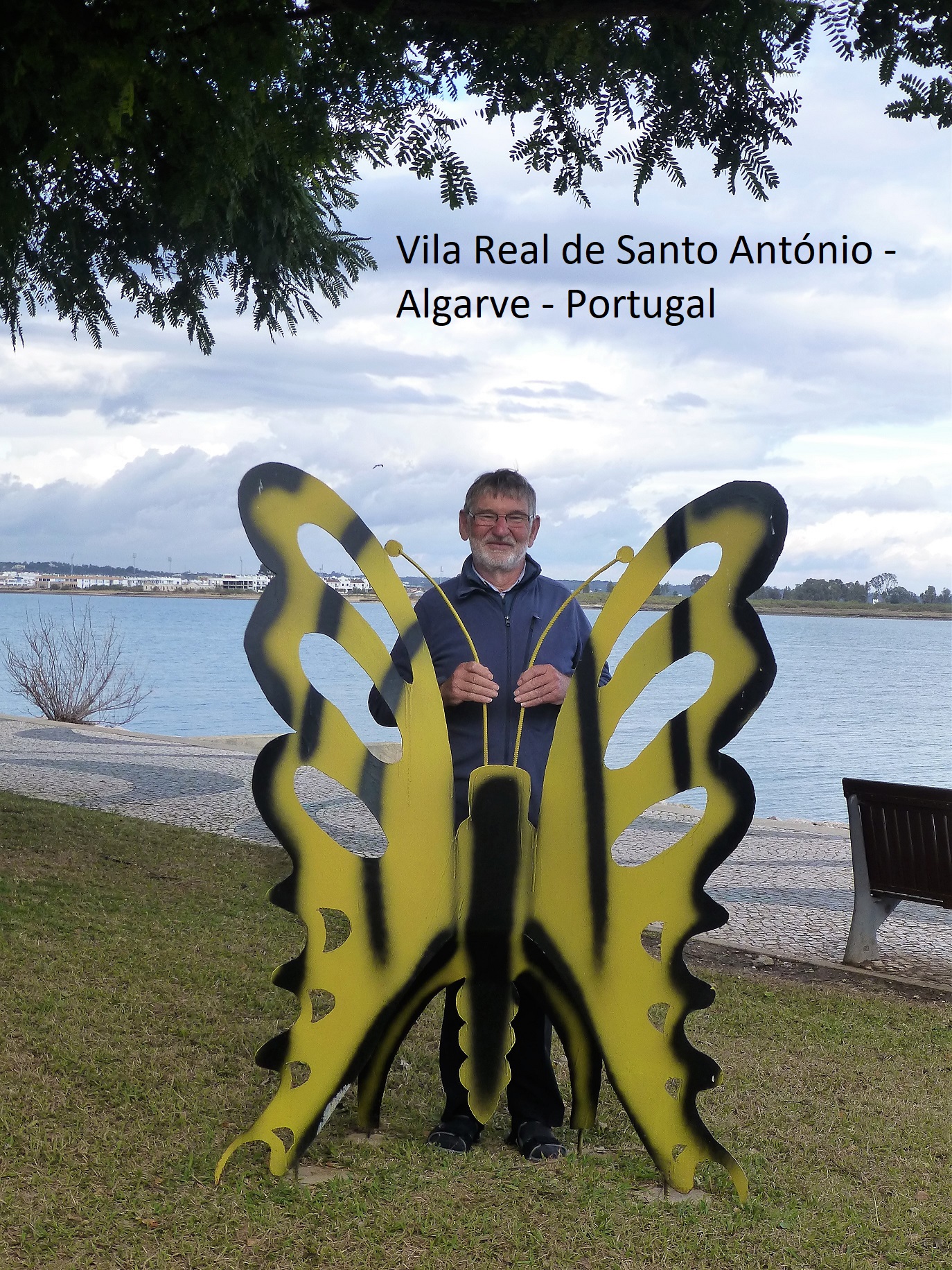 |